Manatees—often nicknamed “sea cows”—are among the few fully aquatic mammals outside cetaceans, along with their close cousins, the dugongs. Since their land-dwelling ancestors returned to the water roughly 50 million years ago, they’ve evolved a suite of traits for grazing, digesting, and living in shallow coasts and rivers filled with aquatic plants. Protecting those habitats is essential to their survival. Here are seven standout facts—plus a little helpful context.
Adult Manatees-Are-Endangered.html">manatees can exceed 4 meters (13 ft) in length and weigh over 1,000 kg (a ton), yet their bodies are surprisingly hydrodynamic: a rounded head, tapered torso, broad paddle-shaped tail, and flattened forelimb flippers for maneuvering. Many Manatees-Are-Endangered.html">manatees also have small nails on their flippers, a nod to their terrestrial ancestry.
They regulate buoyancy using air in their lungs (which run unusually long along the body), while their dense, heavy bones (pachyostosis) act as counterweights so they don’t bob uncontrollably to the surface.
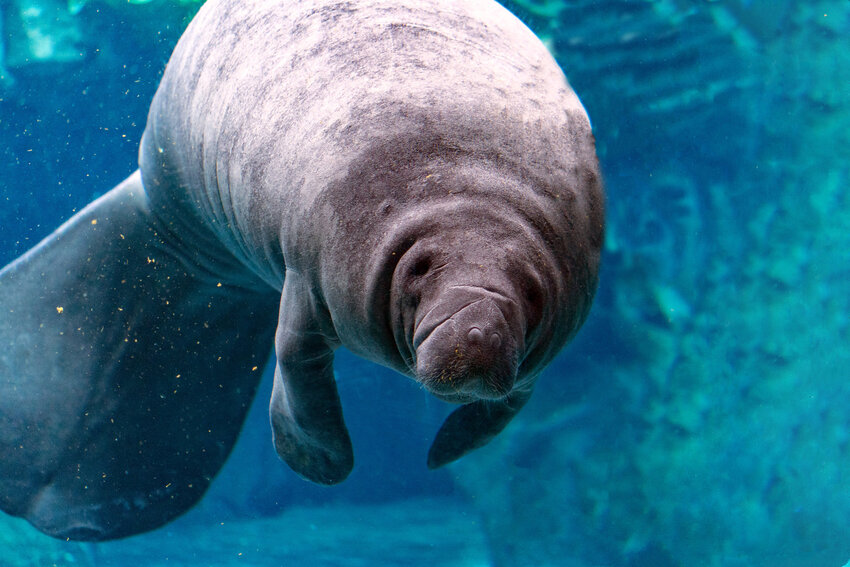
There are three living species, all in the genus Trichechus:
West Indian manatee (T. manatus) — Caribbean, Gulf and Atlantic coasts of the Americas (including the southeastern U.S.); includes the Florida and Antillean subspecies.
Amazonian manatee (T. inunguis) — freshwater rivers and floodplains of the Amazon Basin.
West African manatee (T. senegalensis) — tropical West Africa, from Senegal to Angola, in coastal and inland waters.
All three are currently assessed as Vulnerable on the IUCN Red List due to threats like boat strikes, habitat loss, entanglement, and harmful algal blooms.
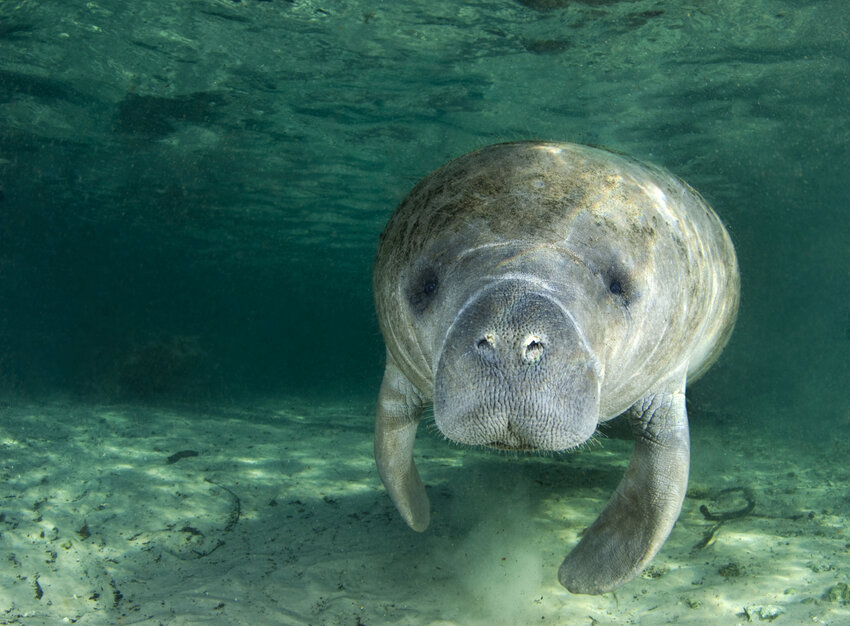
Most mammals have seven cervical vertebrae; manatees are an exception with six (sloths are another oddball group). The trade-off: they have limited neck flexibility, so to look behind them they often pivot the whole body.
Their teeth are unusual too: adults lack visible incisors and canines (these are replaced by a keratinized oral pad), and rely on numerous cheek teeth that are replaced by a “marching molar” conveyor—new teeth erupt at the back and slowly push older ones forward as they wear down.
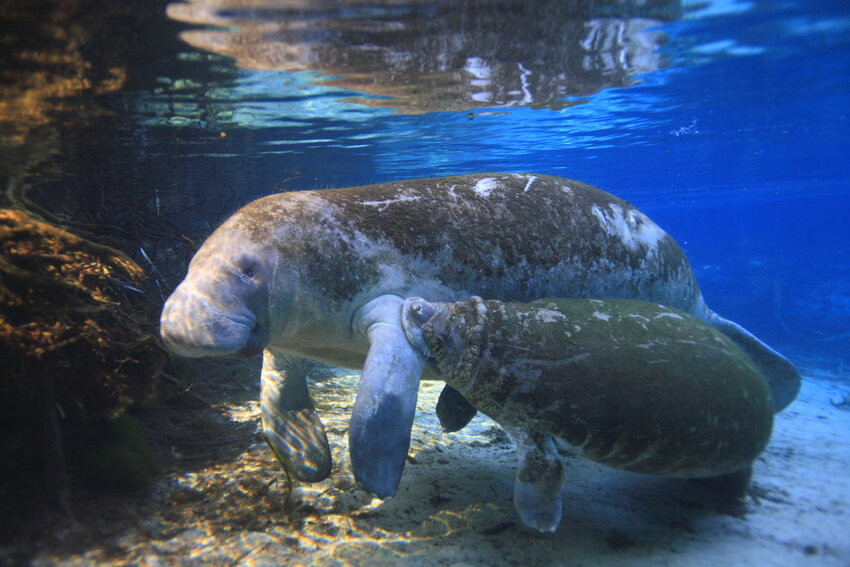
Manatees are strict herbivores, cropping seagrasses and aquatic vegetation with their prehensile upper lip. Food can take about a week to pass through their long hindgut-fermenting digestive system, where gut microbes break down fibrous cellulose. To meet energy needs from such low-calorie fare, a large adult may consume ~10% of its body mass daily.
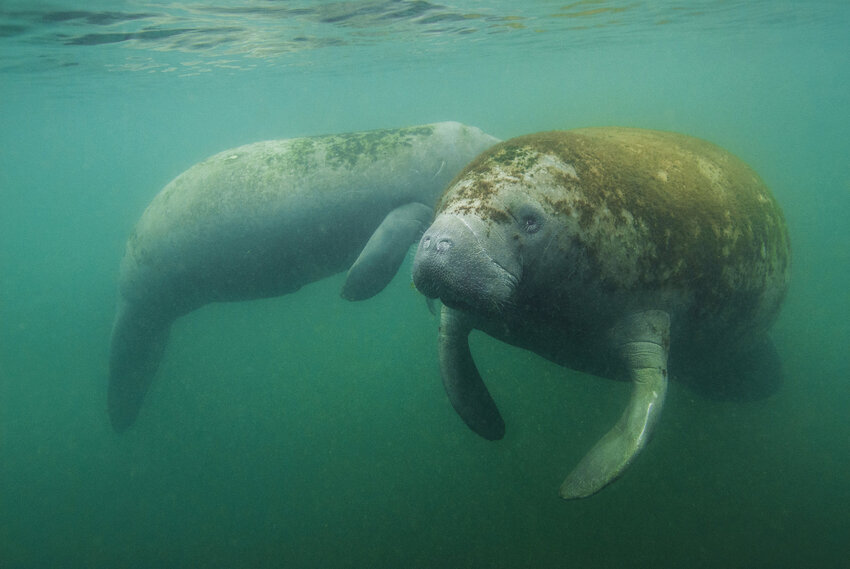
While often seen alone or in small groups, manatees can aggregate by the hundreds at warm-water refuges, including natural springs and outflows from power plants. These sites have enabled seasonal range expansion along the U.S. East Coast as individuals seek winter warmth. Gatherings are typically peaceful; you’ll also see mating herds when several males pursue a receptive female.
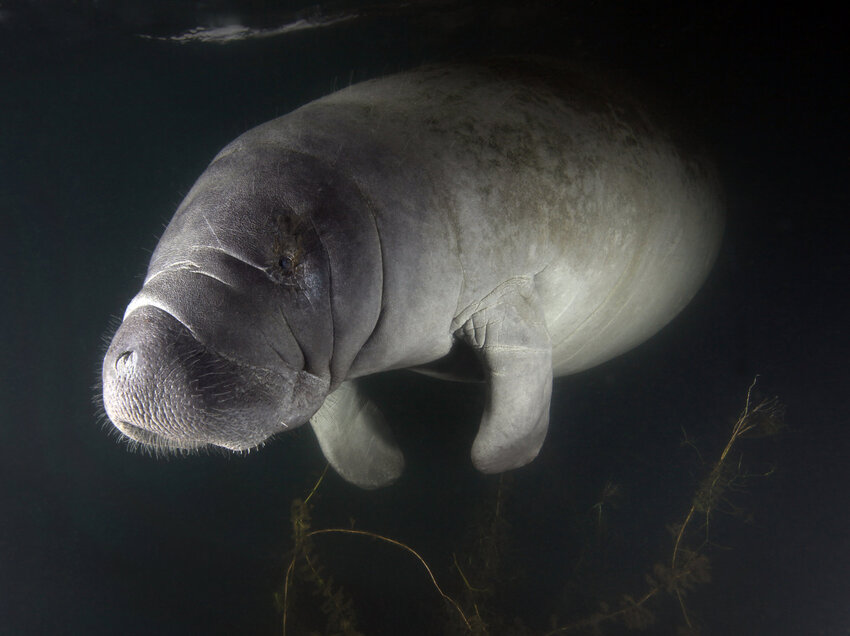
Manatees are agile in the water but maintain a low metabolic rate and have limited insulating fat, so they are cold-sensitive. Prolonged exposure to waters below ~20 °C (68 °F) can be dangerous, which is why warm-water habitat access in winter is a cornerstone of manatee conservation.
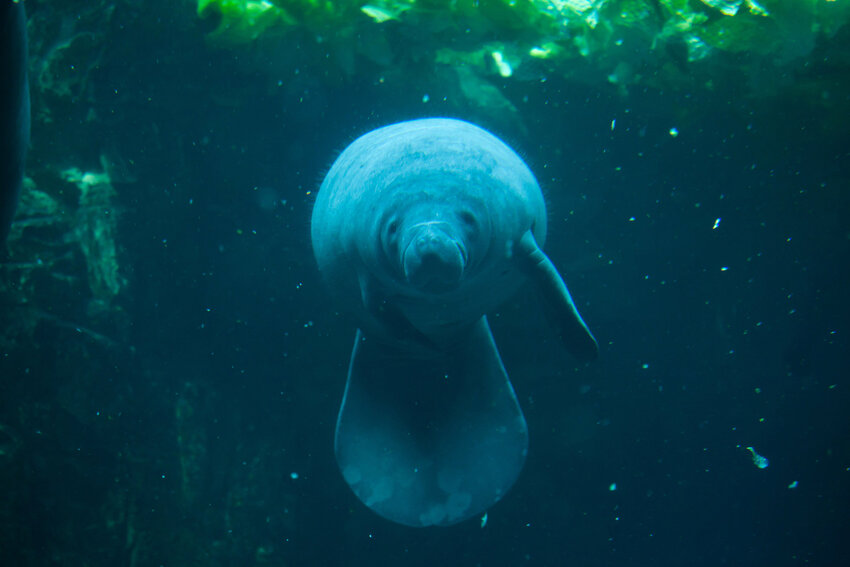
Lifespan: commonly 40–60 years in the wild.
Reproduction: gestation about 12–13 months; typically one calf, which stays with the mother for up to 2 years to learn travel routes and feeding sites.
Senses & behavior: excellent tactile sensitivity via whiskers (vibrissae) on the muzzle and body; gentle, curious, and generally tolerant of people—another reason slow-speed boating and respectful viewing rules matter.
Because their lives revolve around clean, shallow waters with abundant vegetation and reliable warm refuges, safeguarding seagrass meadows, river corridors, springs, and coastal wetlands directly translates into manatee survival. Reducing boat strikes (speed zones, better propeller awareness), limiting pollution that fuels algal blooms, and protecting warm-water sites are among the most effective actions we can take for these remarkable grazers of the sea.
animal tags: manatees
We created this article in conjunction with AI technology, then made sure it was fact-checked and edited by a Animals Top editor.